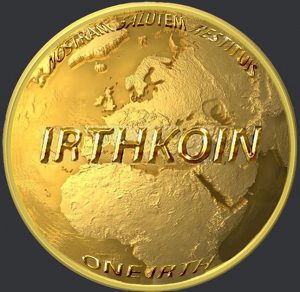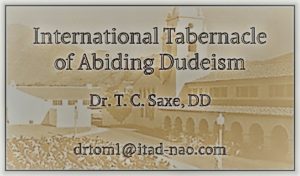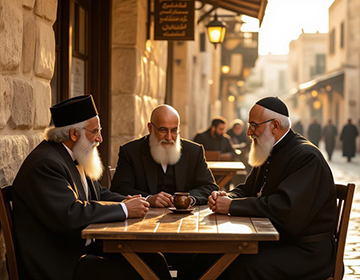Watch this particular episode of The Grayzone, hosted by Max Blumenthal, an anti-zionist, Jewish independent journalist, and Aaron Mate, who also is a Jewish independent journalist and anti-zionist. Two of my favorite journalists. This essay was inspired by this particular episode. Watch the full episode here:
https://www.youtube.com/live/
Coexistence Among Christians, Jews, and Muslims before the emergence and rise of Zionism, compared to what has happened, and continues to happen to the Palestinian people today.
The three Abrahamic religions—Christianity, Judaism, and Islam—share deep historical roots in the Middle East, tracing their origins to the same geographic and spiritual landscape. For centuries, adherents of these faiths lived side by side in regions such as Palestine, the Levant, and broader Ottoman territories, navigating a complex web of social, economic, and religious interactions.
Before the emergence of Zionism in the late 19th century, which sought to establish a Jewish national homeland and introduced new nationalist tensions, these communities often coexisted in relative peace.
This harmony was facilitated by imperial systems like the Ottoman millet framework, shared cultural practices, and the necessities of daily life, though not without underlying hierarchies and occasional conflicts.
This essay explores the historical context of this interfaith coexistence, highlighting key periods, institutional mechanisms, and everyday examples that underscore a shared existence disrupted by modern nationalism.
The foundations of interreligious coexistence in the Middle East were laid during the early Islamic caliphates, beginning in the 7th century. As Islam expanded, it encountered established Jewish and Christian communities, incorporating them under the dhimma pact—a system of protection that allowed non-Muslims to practice their faiths, maintain their institutions, and pursue livelihoods in exchange for taxes and recognition of Muslim supremacy.
This arrangement fostered stability, enabling Jews and Christians to flourish in various roles, from scholars and merchants to artisans.
In medieval Muslim lands, such as the Caliphate of Cordova in Spain or Baghdad under the Abbasids, Jewish communities experienced periods of prosperity and intellectual collaboration with Muslims, contrasting sharply with the persecutions faced in Christian Europe.
Christians, too, benefited from this tolerance; Eastern Orthodox, Coptic, and Armenian churches persisted, contributing to a multicultural tapestry where religious differences were managed rather than eradicated.
While Islam held ideological privilege, the collaborative nature of Islamic civilization allowed for a “pretty good” level of relations in most times and places, marked by persistence and proximity rather than perpetual strife.
By the Ottoman period, which spanned from the 16th to the early 20th century, this coexistence evolved into a more structured form through the millet system.
The Ottomans, ruling over a vast empire that included the Holy Land and much of the Middle East, granted autonomous self-governance to religious minorities. Christians and Jews operated their own communal institutions, handling matters like education, marriage, and welfare, while paying taxes to the sultan.
This system privileged Muslims legally but provided non-Muslims with significant religious and cultural freedoms, promoting a pluralist society.
In Palestine under Ottoman rule, Muslim Arabs formed the majority, alongside Christian Arabs, Armenians, and indigenous Jewish communities—both Arabized Mizrahi and Sephardic Jews who had lived there for centuries.
The millet framework minimized direct conflicts by allowing each group to self-regulate, and by the 19th century, influenced by European pressures, the empire advanced notions of equal citizenship, enhancing cosmopolitanism in cities like Jerusalem and Beirut.
Daily life in these shared spaces exemplified the practical peace that defined pre-Zionist interfaith relations. In villages, neighborhoods, markets, and apartment buildings across the Middle East, Muslims, Christians, and Jews interacted routinely, bound by common languages like Arabic, shared foods, and cultural traditions.
For instance, in Jerusalem, Muslim women respected Jewish Sabbath customs by allowing Jewish neighbors priority access to water pumps, and some Muslims even participated in Jewish prayers. Arab parents enrolled their children in Jewish schools, where they learned alongside Jewish peers, fostering mutual understanding.
Indigenous Jews were often seen by Palestinians as “sons of the land” or “Jewish Arabs,” integrated into the local fabric, distinct from later European Ashkenazi immigrants. Christians, including Maronites and Orthodox groups, contributed to this shared identity, as evidenced by figures like Najib Azuri, a Christian Ottoman official who reflected on the community’s dynamics.
Shared spaces, such as the Church of the Holy Sepulchre guarded by Muslim custodians, symbolized mutual protection and interdependence.
Even in times of hardship, like the desolation noted by 19th-century travelers, these groups cohabited, with religion intersecting with other identities like ethnicity, profession, and locale.
That said, this coexistence was not idyllic; it operated within a framework of inequality. Jews and Christians, as dhimmis, faced discriminatory taxes, restrictions on building places of worship, and social hierarchies that placed Muslims at the top, Christians in the middle, and Jews often at the bottom.
In Palestine, Jews endured overcrowding in urban quarters, symbolic desecrations like the fouling of the Western Wall, and rules requiring them to yield to Muslims to avoid violence.
Periodic tensions arose from economic strains, population movements, or external wars, but these were exceptions rather than the rule, with relations generally characterized by “getting by” in everyday life.
The Ottoman system’s emphasis on stability mitigated large-scale conflicts, allowing for a rapport that sustained diverse communities for centuries.
In conclusion, before Zionism introduced nationalist aspirations and European colonial influences, Christians, Jews, and Muslims in the Middle East maintained a fragile yet functional peace rooted in imperial tolerance, autonomous governance, and shared human experiences.
This era, while marked by hierarchies, demonstrated the possibility of interfaith harmony, as seen in collaborative daily interactions and cultural overlaps.
The disruption caused by Zionism and Arab nationalism in the late 19th and early 20th centuries shattered this equilibrium, leading to the conflicts that define the region today.
Understanding this pre-Zionist history reminds us that peaceful coexistence among these faiths is not merely aspirational but has deep historical precedents.
This post was brought to you by those wonderfully visionaries at IRTHKOIN (me). The Evolutionary Crypto-Currency coming soon to your laptop, computer, and cellphone, stay tuned for news.

Stay tuned for updates on my “Gummies” coming soon to a Walmart near you

See my AI music and art at my YouTube channel here: https://www.youtube.com/@music-art-theunknownsockpuppet
Peace & Abide, La paz y la morada, السلام والالتزام , שלום ושמירה, Paix et Demeure, Խաղաղությունը եւ մնալը, Мир и пребывание,, 平和と遵守, 和平與恪守, Aştî û Abad, صلح و عبید, Fred och Abide, Kapayapaan at Patuloy, Frieden und Bleiben, Mir i Ostanite, शांति और निवास, Hòa bình và ở lại, Мир и Абиде, שלום און בלייַבן, สันติภาพและการปฏิบัติ, Mir in bivanje,
Yadhum oore yaavarum kelir, “The World Is One Family”

Dr. T. C. Saxe, DD, RSISHE

For those who have been keeping up with my progress with my new book, “Ramblings of an Old Fart” here’s my latest in PDF format:
If you just happen to be a REAL publisher of “Books”, you know, hard-bound, or, your rich daddy or uncle is, please contact me to get into the fierce bidding war to place your bid to publish my book. Just kidding, I’m really seeking a Literary Agent however, if you are one or your rich dada or uncle is. contact me.
Here’s a few Social Media links for sharing, thanks:
This website is not filled with a bunch of “Click-On” ads for the latest in “Toothbrushes” “Fashion” or “Free trips to wherever” generating millions of pesos in income. If you do decide to donate a few Pesos because you enjoy reading my essays, that’s awesome, and I sincerely thank you. IF, you donate the cost of a Starbucks, that would be awesome!
Send Dr. Saxe a comment using the form below:

